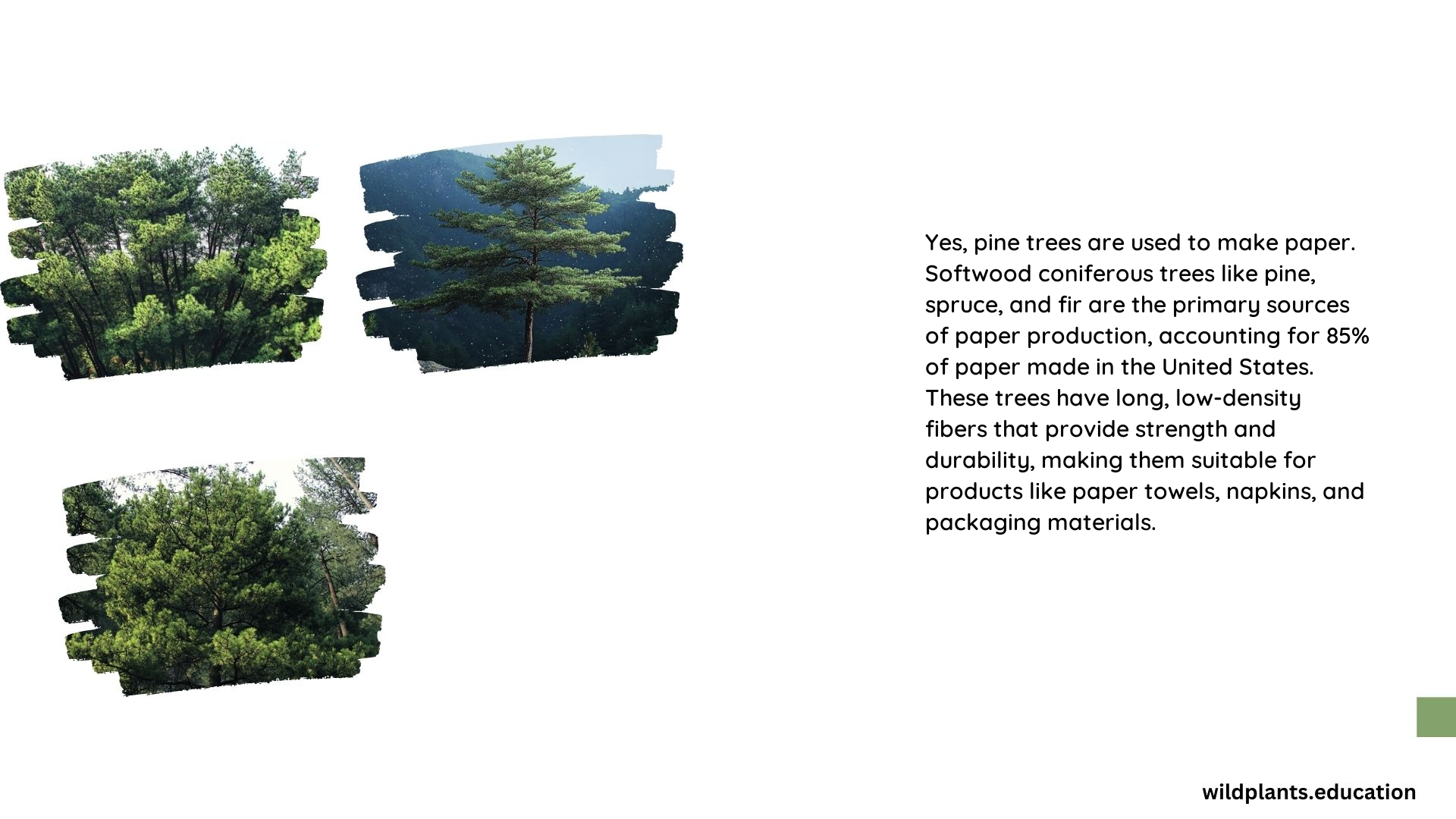Pine trees play a significant role in paper production, accounting for 45% of the total wood pulp produced in the U.S. for paper manufacturing. These versatile trees are widely used in the paper industry due to their long fibers, which contribute to the strength and quality of the final product.
What Percentage of Paper is Produced from Pine Trees?

Pine trees account for 45% of the total wood pulp produced in the U.S. for paper manufacturing. In addition to pine, other tree species like spruce and fir are also used, depending on the desired paper quality.
What Types of Pine Trees are Used for Paper Production?

Standard pine trees, often with a 45-foot usable trunk and an 8-inch diameter, are commonly used for paper production. These pine trees are typically grown in managed forests, where they are harvested and replanted to ensure sustainability.
How is Pine Wood Converted into Pulp for Paper Production?
The process of converting pine wood into pulp for paper production involves several steps:
-
Harvesting Process: The harvesting process involves logging, debarking, and chipping the wood into small pieces before converting it into pulp.
-
Pulping Process: There are two main methods of pulping: chemical and mechanical. Chemical pulping involves cooking the wood with chemicals to break down lignin, while mechanical pulping uses a grinding process to separate fibers.
-
Timeframes and Yield Percentages:
- Chemical Pulping: Approximately 24 trees are required to produce 1 ton of virgin printing and office paper using chemical pulping.
-
Mechanical Pulping: This method uses fewer raw materials, requiring around 12 trees to produce the same amount of paper.
-
Quantities of Wood Required: A standard pine tree can yield approximately 10,000 sheets of paper.
How Sustainable is the Use of Pine Trees for Paper Production?
The paper industry is working towards sustainable forestry practices, with 90% of wood sourced from private, sustainably managed working forests in the U.S. Additionally, recycled paper significantly reduces the demand for virgin pulp, helping to conserve forests.
What are the Environmental Considerations Regarding the Use of Pine Trees for Paper?
The paper industry is committed to sustainable forestry practices, ensuring that the use of pine trees for paper production is environmentally responsible. Some key considerations include:
- Sustainable Forestry Practices: 90% of wood used in paper production is sourced from private, sustainably managed working forests in the U.S.
- Recycled Paper: The use of recycled paper significantly reduces the demand for virgin pulp, helping to conserve forests.
- Continuous Replanting: Pine trees used for paper production are typically grown in managed forests, where they are harvested and replanted to ensure sustainability.
Conclusion
Pine trees play a crucial role in the paper industry, accounting for a significant portion of the wood pulp used in paper production. Their long fibers and availability make them a valuable resource for the manufacturing of various paper products. The industry’s commitment to sustainable forestry practices and the use of recycled paper further enhance the environmental sustainability of pine tree-based paper production.
References
- Scanse Blog: How much paper comes from one tree? Consumption, Impact, and Sustainability
- Ribble Packaging: How Much Paper Comes From One Tree?
- American Forest & Paper Association: Paper Industry Champions Sustainable Forestry
